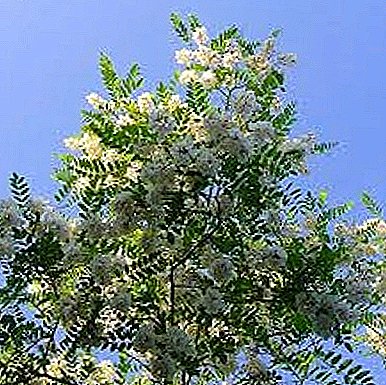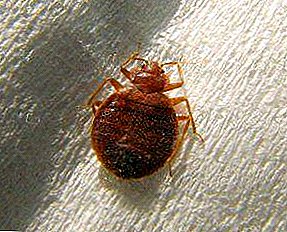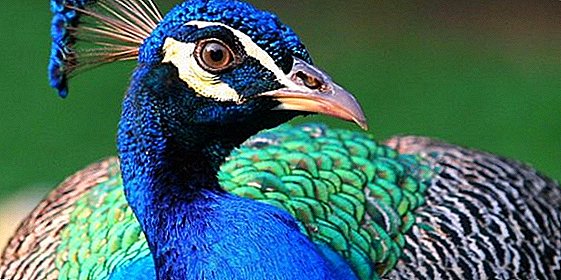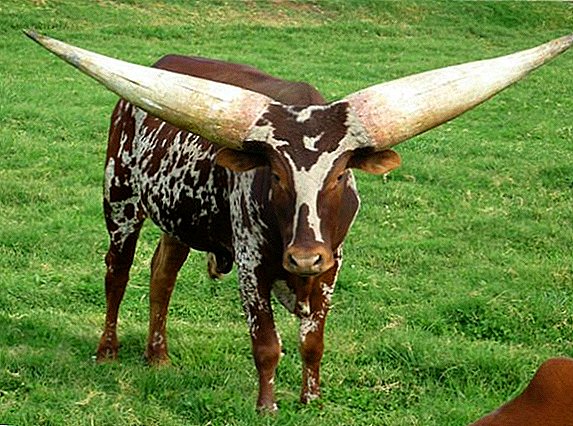 Man domesticated a wild bull at least five thousand years ago. Today, we associate the cow with something good-natured, calm, and even a little sad, and we recall the aggressiveness of the bulls except in connection with the Spanish corrida, although it is increasingly being suggested by opponents of cruelty to animals.
Man domesticated a wild bull at least five thousand years ago. Today, we associate the cow with something good-natured, calm, and even a little sad, and we recall the aggressiveness of the bulls except in connection with the Spanish corrida, although it is increasingly being suggested by opponents of cruelty to animals.
However, looking at the image of the wild bull Vatussi, you begin to understand that the representatives of the cow world are not so simple and harmless as we used to think.
In any case, this magnificent and not devoid of grace mammal worthy to get to know him better.
Appearance
The main distinguishing feature of Watusi is his horns. If you remove this incredible size decoration, in front of us will appear that very familiar cow from childhood. But when the head of a ruminant animal is adorned with solid outgrowths from 1.5 to 3.5 m long and almost half a meter in length at the base, such a sight cannot but impress.
Vatussi, like the domestic cows, are descendants of extinct wild tours (Bos taurus), the last representative of which lived to 1627. It is believed that it was Vatussi who retained the maximum similarity with his primitive ancestor.
Did you know? In the Guinness Book of Records in 2003, a wild bull named Lurch, who lived in the US state of Arkansas, was entered. Each of its horns weighed 50 kg and had a girth volume of 92.25 cm!An adult artiodactyl has a height at the withers of 1.3-1.7 m, a slanting body length is 2-3.6 m. A male individual can weigh 600-730 kg, a female can range from 400 to 550 kg. A two-month-old calf usually weighs about 20 kg or more.
 It should be recognized that the size of the vatussi is still slightly inferior to the wild tour: the ancient animal was 1.7-1.8 m tall and weighing close to 800 kg. The color of long-horned bulls is brown, sometimes with white spots. Another distinguishing feature is the massive chest.
It should be recognized that the size of the vatussi is still slightly inferior to the wild tour: the ancient animal was 1.7-1.8 m tall and weighing close to 800 kg. The color of long-horned bulls is brown, sometimes with white spots. Another distinguishing feature is the massive chest.But back to the horns, the main decoration of the breed. The most valuable are considered vatussi, whose "crown" has a cylindrical or lyre shape, and, of course, the longer the horns, the more expensive their carrier. However, the animal wearing such beauty is worth a lot of effort, because it weighs an average of about 80 kg, diverging to the side by more than 2 m.
Familiarize yourself with the most well-known types of beef breeds for fattening.
By the way, one of its names is connected with the distinctive feature of this descendant of the wild tour. In Rwanda, this species is sometimes called "inyambo", which means "a cow with very long horns." Another local name for the long-horned bull is “insago”, which means “once found” in the language of the Tutsi tribe.
These animals are called “Vatussi” in Burundi and Rwanda (after the name of one of the local Tutsi tribes), but in Uganda, the ethnic composition of which is largely represented by the ankole, wild cows with long horns are called, respectively, “ankole”. 
Where dwells
East Africa, the territory of present-day Rwanda, Burundi and Kenya, is the historic homeland of watusi or ankole. It is believed that wild tours came here from the Nile River no less than two thousand years before Christ: animals with characteristic huge horns can be seen in the plots of wall paintings of ancient Egypt.
There is a version that, in addition to the wild tours, the humpbacked bulls of zebu (Bos taurus indicus), once spread in India and Pakistan and migrating to Africa, starting from Ethiopia and Somalia, took part in the formation of modern ankole-vatusi. historical period as tours from Egypt.
Important! Vatussi is most likely the result of a natural cross between Egyptian and Indian wild cows.
In the 60s of the last century, the long-horned bulls were brought to America and, thanks to their excellent adaptability, quickly spread throughout almost the entire territory of the New World. In Europe, ankole can be found, for example, on the Crimean peninsula, as well as in the famous Ukrainian reserve Askania-Nova, located in the Kherson region.  Surprisingly, the huge horns of the watusi serve the animal not only for protection against predators, but also for thermoregulation. Thanks to this seemingly cumbersome and inconvenient decoration, the animal is able to easily endure the fifty-degree heat.
Surprisingly, the huge horns of the watusi serve the animal not only for protection against predators, but also for thermoregulation. Thanks to this seemingly cumbersome and inconvenient decoration, the animal is able to easily endure the fifty-degree heat.
It turns out that the hollow inside, horny growths of a bull have a huge number of blood vessels. The blood passing through them is cooled by the flow of air, then re-enters the body, ensuring a decrease in its temperature due to an increase in heat transfer. Here is such an unusual system of thermoregulation, very useful in the African savannah.
It is not surprising that the carriers of the largest horns were considered by the local tribes as the most valuable, because these individuals are the most enduring. Such bulls used to be included in the royal herd and even revered as sacred animals.
Did you know? Sacred cows were not used for food, they served as living confirmation of the status of their owner. However, in conditions of a limited amount of food, African tribes could not afford the luxury of just feeding huge animals, so they tried to get the maximum amount of milk from them. The cows were allowed to graze the whole day, after which they were allowed to go to the calves, giving them the opportunity to drink just as much milk as needed so as not to die of starvation.
In fairness, it is worth noting that this technology did not always produce its fruits, and the youngstock that was on a starvation diet often died before reaching puberty.  And yet, for such African tribes as Tutsi, Ankole, Maasai, Bashi, Bakhima, Kigezi, Kivu and others, Watussi have been the most important animals from an economic point of view for many centuries.
And yet, for such African tribes as Tutsi, Ankole, Maasai, Bashi, Bakhima, Kigezi, Kivu and others, Watussi have been the most important animals from an economic point of view for many centuries.
Lifestyle and behavior
Ankole-vatusi (Americans write the name of this animal with one letter "c" - ankole-watusi) lives in wild nature in open territories - in savannas, steppes or fields.
We advise you to read about why the horns of a bull serve and grow.
Despite their frightening appearance, these bulls have a very calm character, which is not surprising: the hot climate, in which these hoofed animals live, combined with a heavy burden on the head, does not contribute to fussiness and excessive activity.
At the same time, powerful hooves allow animals to overcome fairly long distances in search of food, and even develop quite a decent cruising speed. It should be noted that, if necessary, ankole may well stand up for himself and even display the aggressiveness characteristic of all males of this family.  And yet the huge dimensions and deadly horns make the vatussi almost invulnerable to any of the African predators, so these animals have practically no natural enemies capable of withstanding open combat, and therefore there are not too many reasons for ankole to be angry.
And yet the huge dimensions and deadly horns make the vatussi almost invulnerable to any of the African predators, so these animals have practically no natural enemies capable of withstanding open combat, and therefore there are not too many reasons for ankole to be angry.
Important! Being close to ankole-vatusi, one should exercise the utmost caution: turning the head, the animal can very easily injure a gaping person with a huge horn, completely unwilling to cause pain to the owner.
The domesticated representatives of the breed are completely tame and are happy to put their sides to scratch them. In the mating season, horns become a real and formidable weapon, which the males actively use during ritual fights, finding out which member of the herd is the strongest and has the right to the attention of the female.
What to eat
As you know, cows are herbivores, and in Africa, where historically lived Vatussi, the flora is represented rather poorly. Considering that a huge descendant of a wild tour needs at least 100 kg of grass per day (a cow can do with a more modest dose of 50-70 kg), the only way to survive for ankola is the ability to digest literally any food that you can only get.  And, indeed, the digestive system of the vatussi is designed so that the animal can digest even the most scarce and coarse food, sucking out of it all the nutrients that one can.
And, indeed, the digestive system of the vatussi is designed so that the animal can digest even the most scarce and coarse food, sucking out of it all the nutrients that one can.
Read more about the feeding features of sires.
Such omnivorous and unpretentiousness, combined with the ability for quite a long time to do without water, and allowed the descendants of wild tours not only to survive their predecessors, but also to spread over vast territories, conquering new countries and continents.
Breeding
Vatussi, unlike his extinct ancestor, has a fairly strong genetics and ability to preserve its own kind. Puberty and calves become sexually mature almost simultaneously: at the age of 6-9 months, approximately in the same period, at 4-10 months, full sexual behavior begins to manifest itself.
Gobies are ready for mating at any time, however, in chicks, the ability to conceive and bear offspring is directly related to the sexual cycle. The best time for marriage games is the beginning of the rainy season, which in Africa begins in March and ends in May. The gestation period for all cows lasts 9-11 months (from 270 to 300 days).
Vatussi are very caring and attentive parents, however, the main role in protecting hornless and defenseless calves belongs to the males. At night, when the likelihood of a sudden attack by a hungry predator reaches its maximum, the babies are protected by the powerful horns of the male part of the herd.  In the evening, the bulls drive all the calves into a dense pile, while they themselves are laid around the ring with horns exposed to the outside. Overcoming such a paling, without waking a huge male and not getting acquainted with his deadly weapon, is almost impossible.
In the evening, the bulls drive all the calves into a dense pile, while they themselves are laid around the ring with horns exposed to the outside. Overcoming such a paling, without waking a huge male and not getting acquainted with his deadly weapon, is almost impossible.
Vatussi is an African bull with huge horns that retains maximum similarity to the wild tour, however, unlike its ancestor, it managed to adapt to the changing climate and not only preserve, but also significantly increase its numbers due to the conquest of new territories.
Did you know? The famous semi-nomadic Masai tribe, which lives today in Kenya, eats not only meat, but also ankole blood. She is bred with milk and drunk as a nutritious protein shake..This ability to survive in the most adverse conditions, in the absence of water, food, and the mercilessly scorching sun, has long been successfully used by many indigenous African tribes, who were helped by wild long-horned bulls not to die of starvation.












